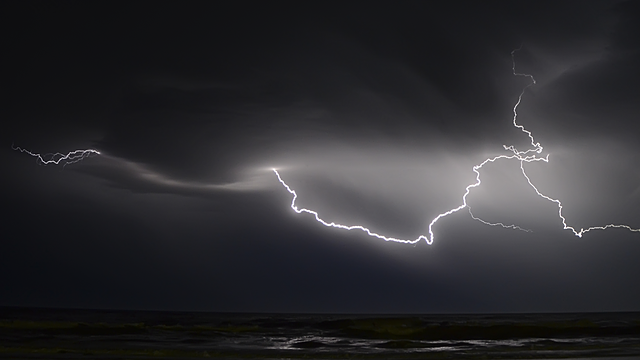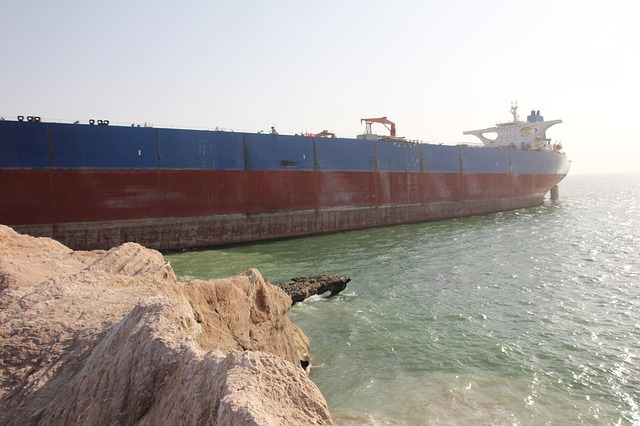Introduction:
A flash flood is induced by a large amount of rain in a short period, usually less than 6 hours. Flash floods are typically defined by violent torrents that burst over river beds, metropolitan streets, or mountain valleys, sweeping everything in their path. Flash floods in urban areas are also known as urban flooding. They can happen within minutes or hours following heavy rain.
Also Read: Monsoon Season of Pakistan – Importance and Problems
Causes of Flash flooding in Karachi:
Flash flooding is caused by a variety of reasons.
1. Rainfall intensity and duration:
These are the two most important factors. The rate of rainfall is defined as intensity, while the duration of the rain is defined as duration. Topography, soil conditions, and ground cover are additional crucial factors.
2. Dam Or Levee Failure Or Blockages Due To Debris Or Garbage:
Flash floods usually happen within minutes or hours after heavy rain, a dam or levee failure, or the quick release of water held back by an ice jam. Flash floods have the power to tumble boulders, uproot trees, damage buildings, and bridges, and carve new channels. Rapidly rising water can reach 30 feet or more. Furthermore, flash flood-producing showers can cause disastrous mudslides. There will not always be a warning that these devastating, abrupt floods are on their way. The majority of flood deaths are caused by Flash Floods. The majority of flash flooding is generated by slow-moving thunderstorms, thunderstorms that pass over the same region repeatedly, or strong rainfall from hurricanes and tropical storms. Floating debris or ice can sometimes gather near a natural or man-made obstacle and block the flow of water. Flooding can occur upstream if water is held back by an ice jam or debris dam. If the blockage suddenly releases, flash flooding may occur downstream. Since, there is no ice in Karachi, majority of the issues are caused by garbage or debris blocking the flow of water.
3. Insufficient Infrastructure:
The floods in Karachi have been the worst since 1931, killing at least 41 people and trapping hundreds of others. This flood was caused by the city’s insufficient drainage infrastructure and unprecedented monsoon rains. The strong rains broke records for rainfall in a single day, among other things. In August 2020, 484 mm of rain fell, which was the most rain in August since 1931. The single-day rainfall established a new record of 223.5 mm, breaking the previous high of 211.3 mm recorded in 1967. Flood-related landslides, infrastructural damage, and traffic jams impacted the everyday lives of around 15 million inhabitants.
4. Heavy Or Freak Rainfall Event Due to Climate Change:
Floods are mostly caused by severe rainfall, which causes rivers to overflow, inundating the surrounding communities and causing significant damage. For more information, read: Impacts Of Changing Monsoon Season Rains Pattern In Pakistan.
5. Improper Management By City Administration:
Another big reason for the flash floods is improper management by city administration. Proper preparation for any impending strong rains or especially monsoon season is a must.
In case of Karachi, four basic causes of flash flooding are 1. Rainfall intensity and duration, 3. Insufficient Infrastructure, 4. Heavy Or Freak Rainfall Event and 5. Improper Management By City Administration.
Impacts of Karachi Monsoon Flash Floods
The monsoon season continues to cause problems in various Pakistani cities, including Karachi, generating floods, flash floods, and other severe weather-related occurrences, resulting in an increased humanitarian effect. According to the National Disaster Management Authority (NDMA), up to 147 fatalities have been recorded throughout seven provinces as of 11 July, with the majority of them in Balochistan (63 fatalities), Sindh (26), and Punjab (23), and 160 people wounded.
Also read: Effects of Climate Change on Monsoon Season of Pakistan.
-
Human lives:
Flooding can endanger human life and may become the reason for the death of humans and unfortunately such cases have been seen in Karachi.
-
Damage Infrastructure:
Monsoon heavy rainfall caused damage to buildings and infrastructure, and results in agricultural and animal losses; landslides, which can endanger human life, impede transportation and communications and cause damage to buildings and infrastructure. The major avenues of Karachi, which contain financial institutions and bank offices, including Pakistan’s national bank, were inundated.
-
Pakistan’s financial center
Torrential rains caused significant flooding and property destruction in Karachi, which is Pakistan’s biggest city and financial center. Anything that effects Karachi has an impact on the whole of Pakistan.
Also check out: Climate Change Threatens Health and Livelihoods of Pakistanis.
-
Serious Traffic issues:
On September 23, 2021, heavy monsoon rain produced serious traffic issues in portions of Karachi, Pakistan’s largest metropolis. The roads were flooded, and automobiles were submerged, which became a source of huge issues for the residents of the city.
In Karachi Roads were submerged, houses were carried away, and many people perished as a result of the flood.
Solutions:
- Tree plantation is one of the greatest answer to this problem
Plantations are man-made forests; some species, such as Eucalyptus and Mangroves, are extremely beneficial since they naturally protect us from floods, tidal waves, and tsunamis. Eucalyptus has a variety of features, including being a fast-growing tree and a natural pesticide. It is also known as a thirsty tree because its roots grow deep down and dry up all the water, making it useful for draining swamps and marshes, and the mangrove forest does the same. We can have some control over floods by planting such plants. Also read: Need for Trees in Karachi – Importance and Benefits Of Trees
- Dams are also useful since they may store excess water, thus additional dams are needed.
- Proper management and preparation for the monsoon season such as cleaning of drains, a proper disaster management plan and arranging dewatering pumps and similar machines that help to drain water from roads and buildings etc.
- Issuing proper weather warning to people and announcing a public holiday on the day of heavy rains.
Conclusion:
Flooding caused by heavy rainfall during the monsoon season in Karachi shows a hazardous impact on the city and also on the citizens. Proper arrangements should be made to mitigate these impacts to solve this issue on long term.
Also check out: Effects of Climate Change on Sindh Province of Pakistan.
I hope you all liked this post! Please comment below if you have any suggestions, comments, or feedback! We at #envpk love hearing from our readers! Thanks!




